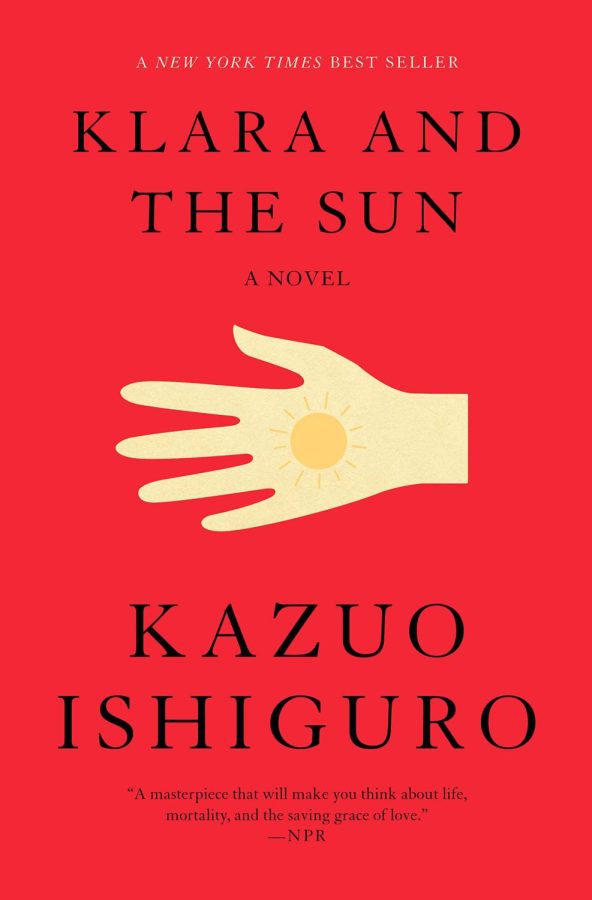Librarians’ picks: Klara and the Sun
Klara and the Sun shares the world from the perspective of a robot or Artificial Friend, “AF,” Klara, who explores human emotions through her assistance of Josie, a sick and dying girl.
February 1, 2022
Author Kazuo Ishiguro weaves a complex narrative of loss, love and maturity in Klara and the Sun. The protagonist, Klara, gives a captivating critique of human behavior as well as an analysis of what it means to love. Despite her fascinating character development and continually changing perspective on human nature, the plot ends abruptly, leaving questions unanswered and readers wanting more.
The story follows “AF” or Artificial Friend, Klara, a humanoid robot created to assist teenagers as they grow up. Klara is unique from the other AFs in that she has an incredible observational ability, allowing her to closely examine the world around her. She is chosen from her store by 14-year-old Josie, a girl with a medical condition that makes her very ill. As Klara devotes herself to saving Josie, she learns the incongruity of human nature by studying Josie’s relationships with those around her. Throughout the narrative, she takes on her own challenges and develops her own beliefs.
Klara’s narration gives the story a unique perspective. The nonhuman aspect of Klara’s personality, coupled with her general naivety and incredible observational intelligence, gives the readers a chance to analyze human emotions from the point of view of an outsider — a person unfamiliar with human nature and its motivations. Rather than being biased by the emotions of a human character, readers are able to understand all the characters’ individual emotions through Klara’s neutral position.
Klara herself develops throughout the story, and rather than succumbing to the cliché of the evil artificial intelligence-powered robot, Ishiguro maintains Klara’s devotion to helping humans until the very end. She develops her own beliefs through her experiences, giving the reader the satisfaction of watching her further her understanding of human emotion, learn to communicate and gain the trust of other characters.
Despite the excellent progression of Klara’s personal journey, there are loose ends of the plot that are never explained. Ideas are introduced and never expanded upon as the story ends without a finite explanation. The ending of the story itself is unsatisfying as the climax is reserved for the very end of the book. The story ends abruptly and leaves the reader in the dark about whether Josie ever finds out what Klara did for her. Klara’s personal conclusion is also haphazard, as it doesn’t seem to match the tone of the rest of the ending. It almost feels as if she was abandoned, which is not reflective whatsoever of the relationship she developed with the other characters.
Although the idea and execution of Klara’s character is exceptional, the book itself is missing some key ideas that would have provided for an overall more satisfying read.



































































